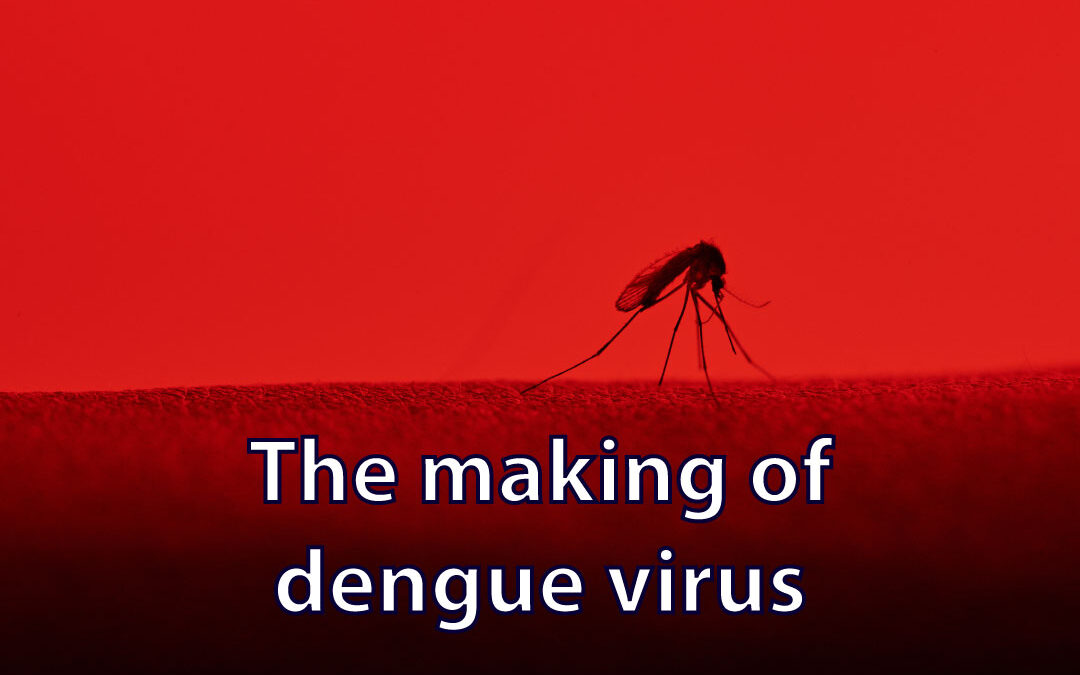The non-structural proteins of dengue, although relatively small, have multiple assorted roles. In last month’s blog, we have seen how NS2 and NS3 each play multiple roles in virus propagation and host immunomodulation. This month we address NS4 and NS5, two important enzyme drug targets, that have a main role in viral replication.
NS4, important for viral replication
The dengue NS4 region encodes two integral membrane proteins important for viral replication—NS4A and NS4B. A 23-residue region termed (the “2K fragment”) links the two proteins which undergo NS3-mediated cleavage to produce NS4A and 2K–NS4B. The 2K fragment acts as a signal sequence to relocate NS4B to the ER lumen, where it is then cleaved from NS4B by a host signalase. As NS4 does not possess any defined enzymatic activity, it is likely to function through protein–protein and protein–lipid interactions.
– NS4A
Dengue virus NS4A is a small (16-kDa) highly hydrophobic membrane protein that localizes to the ER membrane. NS4A seems to have a high propensity for binding highly curved membranes, where it can then self-oligomerize to form a scaffold that is thought to help anchor viral replication complexes. Although mutations disrupting the protein’s ability to oligomerize affect virus replication in vitro, the underlying mechanism is still unknown. With the help of host proteins, NS4A forms ER vesicles, double membrane particles and reshapes the organization of ER. For example, the N-terminal domain of NS4A interacts with vimentin filaments which are phosphorylated and re-localized along with NS4A to sites of viral replication: these vimentin scaffolds serve then to anchor viral replication complexes to membrane structures.
– NS4B
Dengue virus NS4B is a 27-kDa membrane protein involved as well in viral replication. After cleavage from NS4A, NS4B is directed to the ER lumen by the 2K fragment derived from the C terminus of NS4A. In DENV-infected cells, NS4B localizes to ER-derived membrane systems (alongside NS3, E protein, and dsRNA) and is recruited by NS4A to become part of the viral replication complex. Lycorine, a natural alkaloid of plant origin, has been reported to suppress the replication of dengue possibly by inhibiting either membrane insertion of the 2K fragment or the cleavage of 2K–NS4B.
NS5 and (again) its role in viral replication
NS5 is the largest (102 kDa) and the most conserved protein (with ~70% sequence identity among the four serotypes). NS5 carries two domains: a methyltransferase domain (MTase) at its N-terminal end and an RNA-dependent RNA polymerase (RdRp) at its C-terminus. Both domains are connected by a linker of 5–6 residues, which is an important determinant of the NS5 overall conformation and protein activity.
– MTase domain: methylation of the viral RNA
The MTase domain is responsible for capping the viral RNA, allowing the virus to escape the immune response. Viral capping is similar to the 5’ capping of mRNA that occurs in eukaryotic cells which prevents its degradation and enhances interaction with the ribosome for translation. Defects in the viral capping process decrease viral multiplication and lead to attenuated viruses that are more sensitive to the innate immune response. Methylation of the RNA cap is essential for virus replication and represents an important drug target.
– The RdRp domain replicates viral RNA
The RdRp domain of NS5 uses RNA as a template and does not require a primer to elongate nascent RNA. The MTase domain affects both the initiation and elongation steps. Therefore, the two domains “communicate” through the interface between them which contains a series of evolutionary-conserved residues. The effect of the presence of the MTase domain stimulates RdRp activity; moreover, in the presence of residues from the linker region, both the activity and stability of the RdRp domain is significantly enhanced.
Because RdRp activity is absent in the host cell, NS5 represents a promising antiviral target for the design of specific inhibitors with low toxicity. In addition to its role in replicating the viral genome, NS5 can also down-regulate the host immune interferon response via its interaction with the signal transducer and activator of transcription 2 (STAT2) protein or, as proposed recently, by modulating RNA splicing within the host cell.




